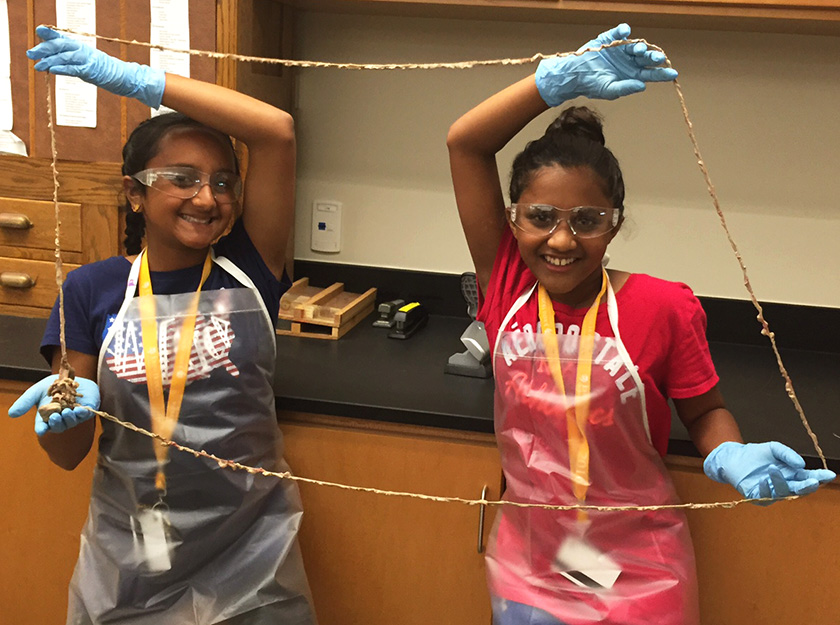Dissecting pig lungs to learn how we breathe

Dissecting pig and sheep lungs to learn how people breathe is how one teen spent her summer. Hari Bhimaraju loves biomedical science and learning about how the body works.
Read our interview with Hari, a 2015 Broadcom MASTERS finalist, below to learn more about her dissections, her medicine management app, and what fruit represents burn victims.
WHAT ARE YOUR CURRENT STEM GOALS: I’m working on a medicine management system for the elderly and visually-impaired. I submitted this project to ProjectCSGirls in June and was a national winner!
There was no comprehensive medicine management system. So I designed an iPhone-based solution.
I saw there was no comprehensive medicine management system. So I designed an iPhone-based solution which includes automatic refills, medicine logs, and medicine reminders. The system also reads out all the medicine details, expiration information, whether a refill is on the way, and dosage information.
Encourage other young biomedical scientists. Join the Society today!
I designed and created a cheap radio-frequency identification (RFID) reader so the medicine bottles can be given RFID tags and associated with a medicine in my app. The caretaker or pharmacist is able to enter the information either by typing or dictating. I also implemented QR code reading in my app, so someone who doesn’t want to use the extra RFID scanning device could use raised QR codes instead.
ON GOING TO STEM SUMMER CAMP: This summer, I attended the Johns Hopkins CTY program, an Introduction to Biomedical Sciences at Dominican University in San Rafael, California. They taught us about the different parts of the body, including muscles, bones, body systems, and more.
My favorite part was definitely the dissections!
My favorite part was definitely the dissections! Every time we learned about a body system, we dissected it from our fetal pigs and saw how it worked.
When we learned about the respiratory system, we dissected sheep lungs, because they’re big and easy to see, and fetal pig lungs. Then we pumped air into them through the trachea to learn how we breathe.
In total, we dissected an entire fetal pig; a sheep lung, brain, and heart; a chicken wing; and a cow eye. It was amazing to see how many countless, intricate processes — each comprised of millions of cells — have to work in perfect sync every second for a whole lifetime!
It was amazing to see how many intricate processes have to work in perfect sync every second for a whole lifetime!
FUN EXPERIMENTS AT CAMP: We injected a strawberry with fungi to learn about Koch’s postulates. We also skinned kiwi to represent a burn victim.
Instead of focusing on a specific project the whole time, we had multiple small projects and learned something different every day. It was a spectacular experience!
ON HOW BROADCOM MASTERS MOTIVATED HER: While I was interested in STEM even before Broadcom MASTERS, the program gave me motivation and taught me that I could do anything. Seeing other finalist’s projects and how much there is to discover in STEM showed me I just have to keep learning. Specifically, I want to study biomedical sciences and conduct hands-on dissections.


